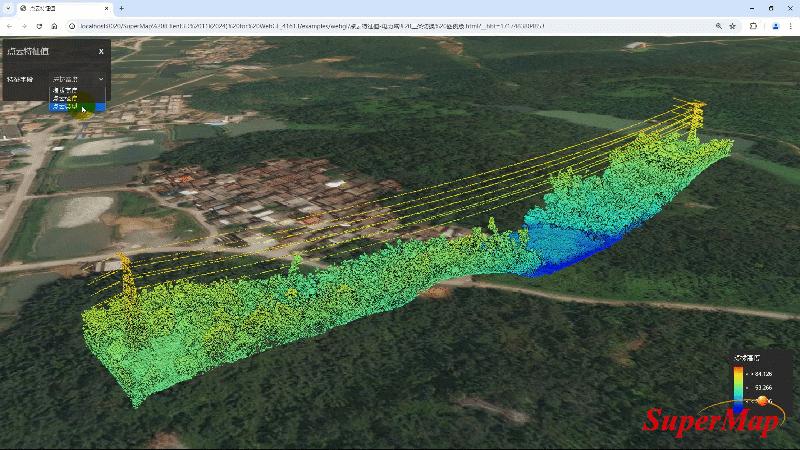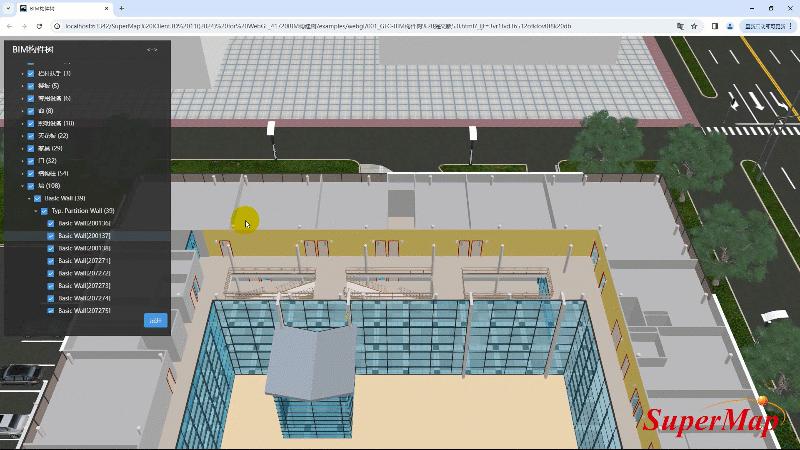Currently, the Web3D client in B/S (browser/server) mode is highly favored in the GIS (geographic information systems) market thanks to its low maintenance cost, easy access, cross-platform compatibility, high data sharing feature and real-time interaction. It is particularly suitable for scenarios that require rapid deployment, wide access and flexible application, such as 3D Real Scene China, a 3D map of natural resources, and smart parks.
Since SuperMap iClient3D client launched in 2011, SuperMap has continued innovation in the field of 3D WebGIS. In 2015, SuperMap released the first plug-in-free SuperMap iClient3D client based on CesiumJS. In 2022, in order to meet the strong demand for 3D GIS in the domestic market, SuperMap released a new self-developed plug -in-free client—SuperMap iClient3D based on WebGL.
In November 2023, to meet higher data rendering performance requirements, SuperMap adopted the latest Web technology and released the updated SuperMap iClient3D client based on WebGPU. The SuperMap iClient3D product provides a wealth of examples and APIs (application programming interfaces), allowing users to easily achieve high-performance loading of massive GIS data, comprehensive spatial analysis and query, and high-fidelity rendering of 3D scenes in a Web browser.
This year, SuperMap iClient3D for WebGL/ WebGPU 2024 (hereinafter referred to as "iClient3D 2024") continues to upgrade spatial data loading, spatial analysis query, large-scale scene rendering and other capabilities to provide users with a more powerful, flexible and efficient Web3D rendering engine. In addition, SuperMap has further upgraded SuperMap iEarth 3D Earth WebApp which provides users with a more intuitive and easy-to-use 3D Web application experience.
01More powerful: multi-source spatial data loading
The integration of multi-source spatial data is the key to building an efficient business application system. Bringing together spatial data from different sources/types/scales can provide decision makers with a more comprehensive data perspective. This year, iClient3D 2024 has further enhanced the multi-source spatial data loading capability, with breakthroughs in data multi-source, data usability, data security, loading efficiency, and data sharing.
As an open vector data format, MVT (Mapbox Vector Tile) can be used to efficiently transmit and render vector data on the Web and mobile devices, and maintain the spatial query and editing capabilities of vector data. It has become an important data source for various applications. iClient3D 2024 supports loading MVT data from more sources, such as: supporting loading MVT data published in WMTS mode, supporting MVT layers to directly load GeoJSON data, and supporting the loading of MVT data released by SuperMap iServer in multi-subdomain mode. It also supports loading MVT data encrypted by AES (Advanced Encryption Standard), effectively improving data security through dynamic encryption capabilities.
In addition, iClient3D 2024 optimizes the display effect of MVT data and supports the display of MVT line annotations in 3D text format. It can randomly adjust the text direction according to the rotation of the camera to better conform to the 3D visual effect. When the MVT data is displayed on the model surface, the text label can be automatically displayed according to the model height, so that the text will not be blocked by the model and terrain.

Application effect of MVT data in iClient3D 2024
Point cloud data has become an indispensable data foundation for urban planning, digital power grid and other fields due to its high precision and rich information it represents. iClient3D 2024 supports data layering and coloring based on the characteristic values of point cloud data such as category, intensity, altitude, etc., which can not only highlight specific features in the point cloud, but also observe the point cloud data more intuitively.

Point cloud visualization based on multi-factor characteristic values
In terms of data usability, iClient3D 2024 adds support for the layer directory tree function for point cloud visualization based on multi-factor eigenvalues. Through an intuitive hierarchical structure, it clearly presents different parts and details of the data, greatly improving the visualization management and data organization efficiency of BIM component data, such as layer visibility control and positioning.

BIM component visualization and management based on layer directory tree
In terms of data sharing, iClient3D 2024 now supports loading S3M 3.01 data that complies with the surveying and mapping industry standard CH/T 9040-2023, as well as 3D Tiles 1.1 data and I3S 1.2 data specified by the OGC (Open Geospatial Consortium) community standard, thereby improving the accessibility and usability of geographic information.
To be continued...